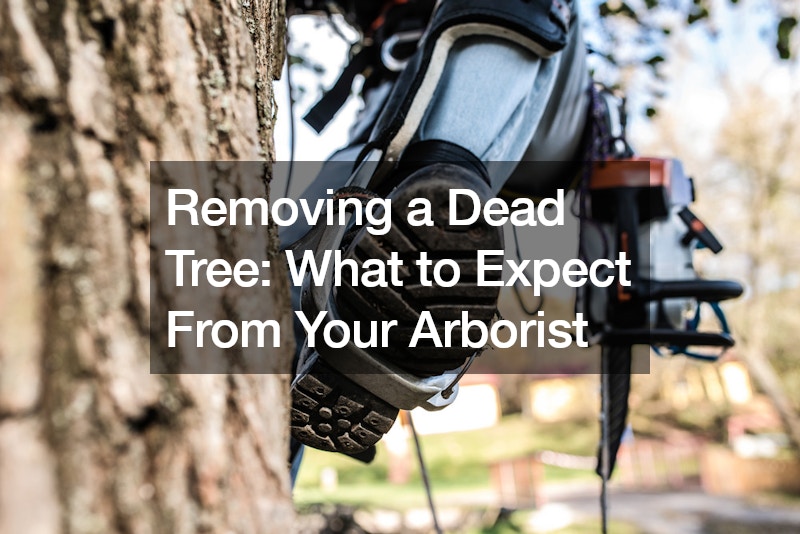When a tree on your property dies, it not only poses a safety hazard but also detracts from the aesthetic appeal of your landscape. In this comprehensive guide, we will explore the process of removing a dead tree and what to expect from your arborist throughout the procedure.
1. How Do I Know If My Tree is Dead?
One of the key signs that a tree is dead is the absence of leaves during the growing season. Additionally, bark that easily falls off and brittle branches are indicators of a dying tree. Fungi growth at the base of the tree is also a common sign of decay.
Tree death can be attributed to various factors such as extreme weather conditions, disease, insect infestation, or improper care. Lack of water, poor soil quality, and physical damage can all contribute to the decline of a tree’s health.
If you suspect that your tree may be dead, it is imperative to seek the advice of a professional arborist who can assess the tree’s condition and recommend the best course of action.
2. Why Should I Remove a Dead Tree?
Dead trees pose significant safety concerns as they are prone to falling unexpectedly, especially during storms or strong winds. This can lead to property damage or injury to individuals in the vicinity.
Leaving a dead tree on your property can also result in potential damage to your home, garage, or other structures. Falling branches or the entire tree itself can cause costly repairs and disrupt your daily life.
In addition to safety and property concerns, dead trees can attract pests such as termites, which may eventually infest your home if not addressed promptly.
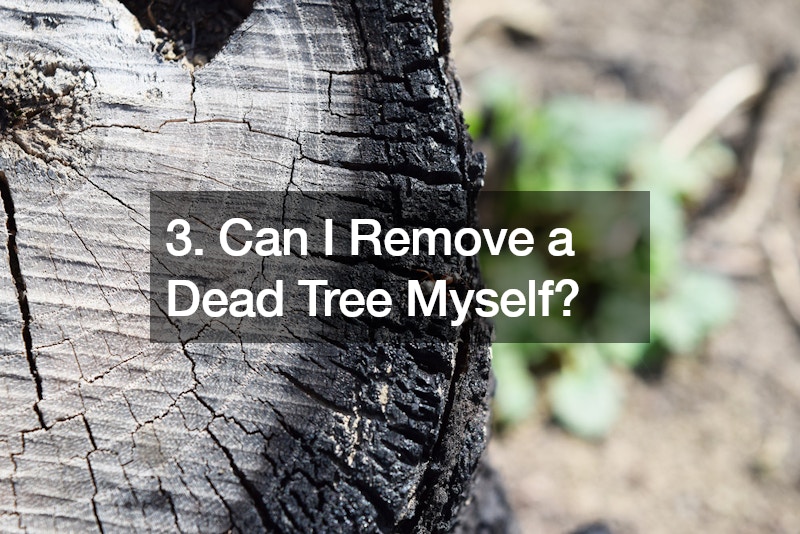
3. Can I Remove a Dead Tree Myself?
Attempting to remove a dead tree on your own can be hazardous and is not advisable without the proper knowledge and equipment. Falling branches or the tree itself can cause serious injury or damage to property.
Hiring a professional arborist for tree removal ensures that the job is done safely and efficiently. Arborists have the expertise and specialized equipment required to handle tree removal tasks of all sizes.
Furthermore, professional arborists are trained to assess potential risks and take the necessary precautions to protect themselves, your property, and surrounding structures during the tree removal process.
4. How Much Does Removing a Dead Tree Cost?
The cost of removing a dead tree can vary depending on several factors including the size of the tree, its location, and the complexity of the removal process. On average, the cost of professional tree removal ranges from $300 to $2,000.
DIY tree removal may seem like a cost-effective option, but it can end up being more expensive in the long run if not done properly. Consider the potential risks and liabilities involved before attempting to remove a tree yourself.
When comparing the cost of professional tree removal to DIY methods, it is important to factor in the value of your time, the risk of injury or property damage, and the peace of mind that comes with hiring a trained professional.
5. What Equipment is Used for Removing a Dead Tree?
Professional arborists use a variety of tools and machinery for tree removal, including chainsaws, ropes, pulleys, and cranes. These specialized equipment allow arborists to safely cut down and remove trees of all sizes.
In addition to tools, arborists wear safety gear such as helmets, gloves, and harnesses to protect themselves during tree removal. Safety precautions are paramount in ensuring that the job is completed without incident.
By utilizing the proper equipment and safety gear, arborists can efficiently remove dead trees while minimizing the risk of injury to themselves and others.
6. Will the Arborist Remove Stump and Roots?
After cutting down a dead tree, the arborist will typically grind the stump using a stump grinder to remove it from the ground. Stump removal ensures that the tree is completely eliminated from your property and prevents regrowth.
Depending on the tree species and root system, arborists may also offer root removal services to prevent the spread of disease or decay to other trees in your landscape. This can help maintain the overall health of your yard.
Consult with your arborist to determine the best course of action for stump and root removal based on the size and type of tree being removed, as well as your landscaping preferences.
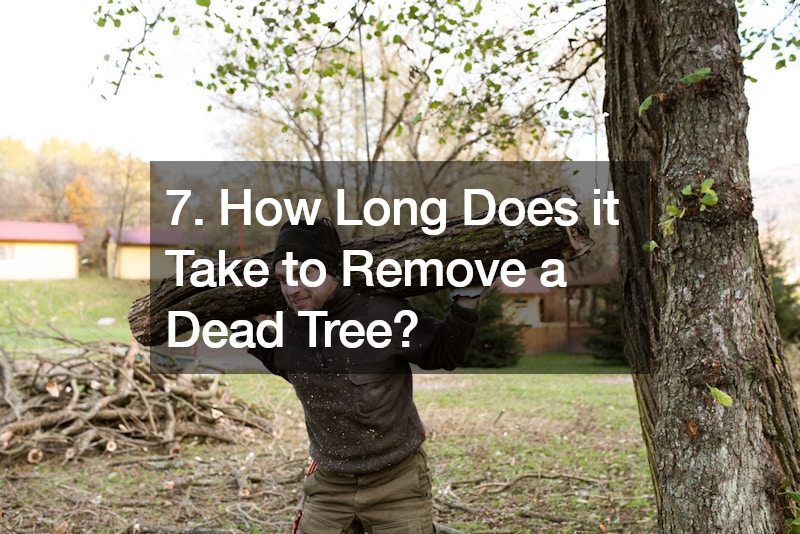
7. How Long Does it Take to Remove a Dead Tree?
The time it takes for your local tree removal can vary depending on factors such as the tree’s size, location, and complexity of the removal process. On average, tree removal can take anywhere from a few hours to a full day.
Weather conditions and accessibility to the tree can also affect the timeline for tree removal. In some cases, arborists may need to schedule multiple visits to complete the removal process based on the tree’s condition and surrounding obstacles.
For a more accurate estimation of the timeframe for removing a dead tree from your property, consult with a professional arborist who can assess the specific details of the job and provide you with a timeline for completion.
8. Do I Need a Permit to Remove a Dead Tree?
Local regulations on tree removal vary by city and municipality, so it is important to check with your local authorities before removing a dead tree from your property. In some cases, a permit may be required for tree removal.
The permit application process typically involves submitting a request to the city or county outlining the details of the tree removal, including the reason for removal, the tree’s location, and the method of removal. Approval must be obtained before proceeding with tree removal.
Failure to adhere to local regulations on tree removal can result in fines or legal consequences, so it is crucial to obtain the necessary permits and follow guidelines set forth by your local government.
9. How Can I Find a Reliable Arborist?
When searching for a professional arborist for tree removal, it is important to research their credentials and qualifications. Look for arborists who are certified by reputable organizations such as the International Society of Arboriculture (ISA) or the Tree Care Industry Association (TCIA).
Reading customer reviews and testimonials can also provide valuable insights into the quality of service offered by an arborist. Look for reviews that mention prompt response times, courteous staff, and successful tree removal experiences.
Seek recommendations from friends, family, or neighbors who have recently had tree removal work done. Word of mouth referrals can help you find a reliable arborist who meets your specific needs and budget requirements.
10. Will the Arborist Clean Up After Tree Removal?
Post-removal cleanup is typically included as part of the tree removal service provided by arborists. This may involve removing debris, branches, and leaves from your property, as well as grinding the stump and leveling the ground where the tree once stood.
Disposal of tree debris is also handled by the arborist, who may transport the wood chips or branches to a recycling facility or composting site. Some arborists offer wood recycling services or can provide firewood for your use or donation.
Before hiring an arborist, inquire about their post-removal cleanup services to ensure that your property will be left in a clean and tidy condition once the tree removal process is complete.
11. Can I Plant a New Tree in the Same Spot?
If you are considering planting a new tree in the same spot where the dead tree once stood, it is important to assess the soil quality and environmental conditions of the area. Conduct a soil test to determine if the soil is suitable for planting a new tree.
Consult with a professional landscape designer or arborist who can recommend tree species that are well-suited to your specific location and landscaping requirements. Consider factors such as sunlight exposure, drainage, and space availability when selecting a new tree.
Improving the soil quality by adding topsoil, fertilizers, or organic matter can help promote healthy tree growth and ensure the success of your new planting. Consideration should also be given to irrigation needs and future maintenance requirements.
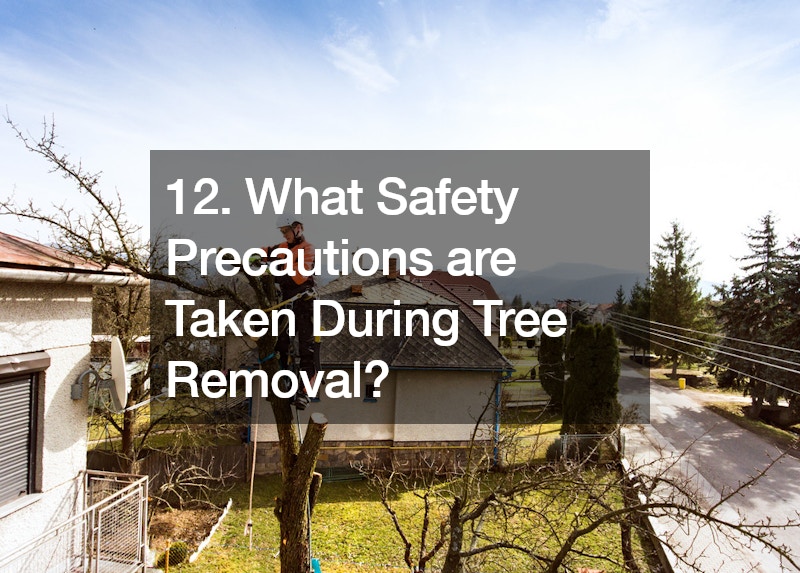
12. What Safety Precautions are Taken During Tree Removal?
Prior to tree removal, arborists conduct a thorough inspection of the tree to identify potential hazards and risks. This may involve assessing the tree’s stability, decay, or weak limbs that could pose a danger during removal.
Arborists use proper safety gear such as helmets, gloves, and harnesses to protect themselves from injury while working at heights. Additionally, they ensure that equipment is used correctly and that all team members are briefed on safety protocols before commencing the removal process.
By taking necessary safety precautions and adhering to industry best practices, arborists can minimize the risk of accidents and ensure that tree removal is completed safely and efficiently.
13. Will Removing a Dead Tree Improve Landscape Aesthetics?
Dead trees can detract from the overall curb appeal of your property and negatively impact the aesthetics of your landscape. Removing a dead tree can improve the visual appeal of your yard and create a more inviting and attractive outdoor space.
After tree removal, you have the opportunity to replant or redesign your landscape with new plants, shrubs, or trees that complement your existing outdoor environment. Consider consulting with a qualified team of professional landscape designers to create a cohesive and visually appealing outdoor space.
Removing a dead tree can open up space for new plantings, hardscaping features, or outdoor seating areas that enhance the functionality and beauty of your landscape. Take advantage of this opportunity to transform your yard into a welcoming and picturesque environment.
14. How Can I Prevent Future Tree Deaths?
Proper tree care and maintenance are essential for preventing future tree deaths on your property. This includes regular watering, mulching, pruning, and fertilizing to promote healthy tree growth and establish strong root systems.
Early detection of tree stress or disease can help prevent tree deaths before they occur. Keep an eye out for signs of yellowing leaves, leaf drop, or pest infestations that may indicate a problem with your trees.
Consult with professional arborists or tree nurseries for guidance on the best practices for maintaining healthy trees on your property. Implementing a consistent tree care routine can help prolong the lifespan of your trees and prevent future tree deaths. Your chosen contractor may recommend a new sprinkler system or lawn irrigation services to help keep your lawn and tree properly watered and maintained throughout the summer and spring months. Be sure to ask about mulching routines, fertilizers, and more.
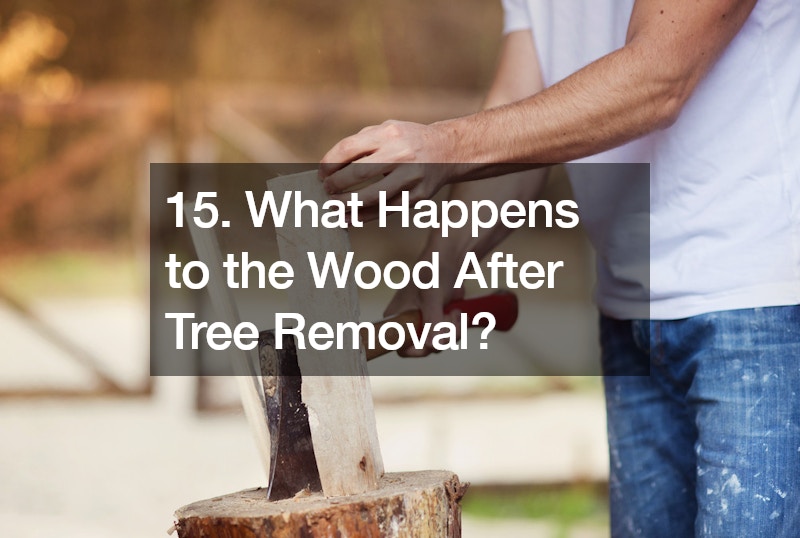
15. What Happens to the Wood After Tree Removal?
After a dead tree is removed from your property, the wood can be recycled or repurposed for various landscaping projects. Wood chips can be used for mulching, composting, or as a decorative element in your garden.
Consider donating excess firewood to local organizations or individuals in need of heating material. Recycling wood ensures that it does not go to waste and can be beneficial to both the environment and the community.
If you have a use for the wood from the removed tree, discuss options with your arborist for salvaging and repurposing the wood. From garden borders to outdoor furniture, there are many creative ways to incorporate tree wood into your landscaping projects.
Removing a dead tree from your property is a necessary step to ensure the safety of your home and enhance the aesthetics of your landscape. By hiring a professional arborist, you can expect a safe and efficient tree removal process that includes stump removal, cleanup, and disposal of tree debris. Consult with a reputable arborist to schedule tree removal services and transform your outdoor space into a beautiful and inviting environment. To get a quote on your unique tree removal project, we sure to reach out to a team of local professional in your area. By choosing a local contractor, you can feel confident that they’ll hold valuabl experience regarding common tree species and weather patterns in your area.
